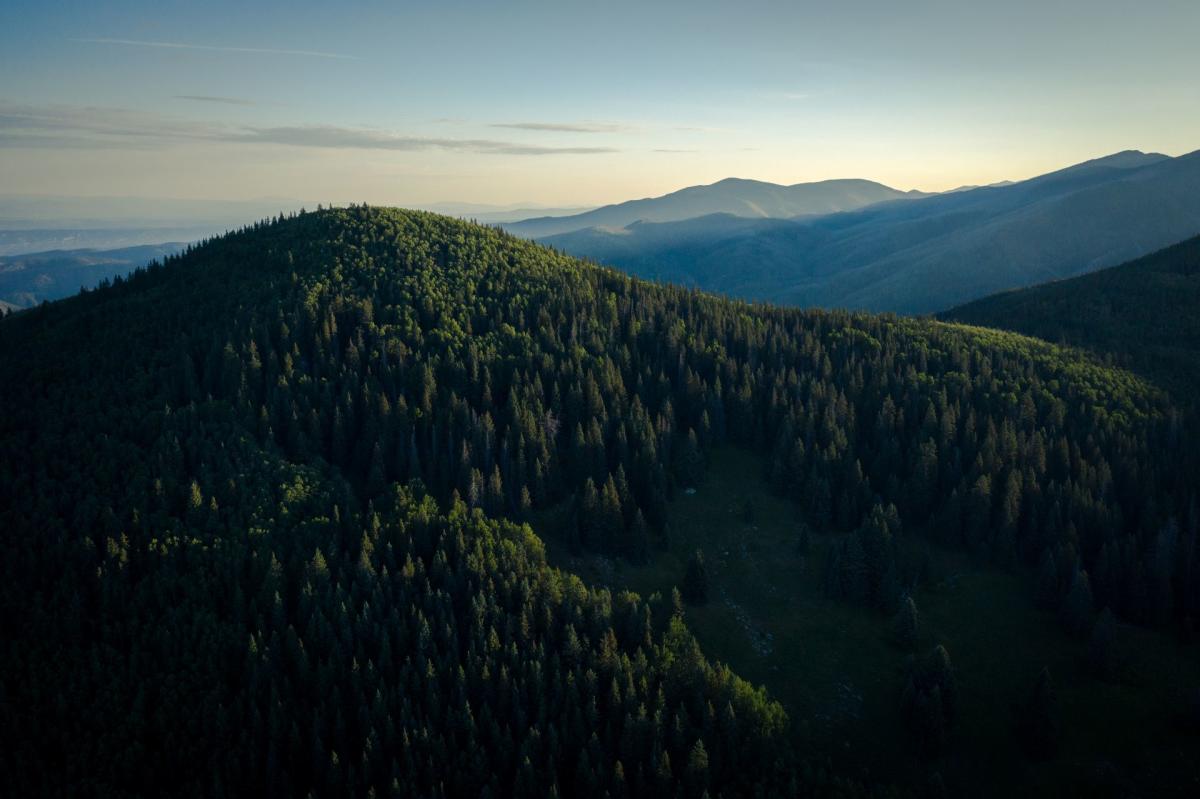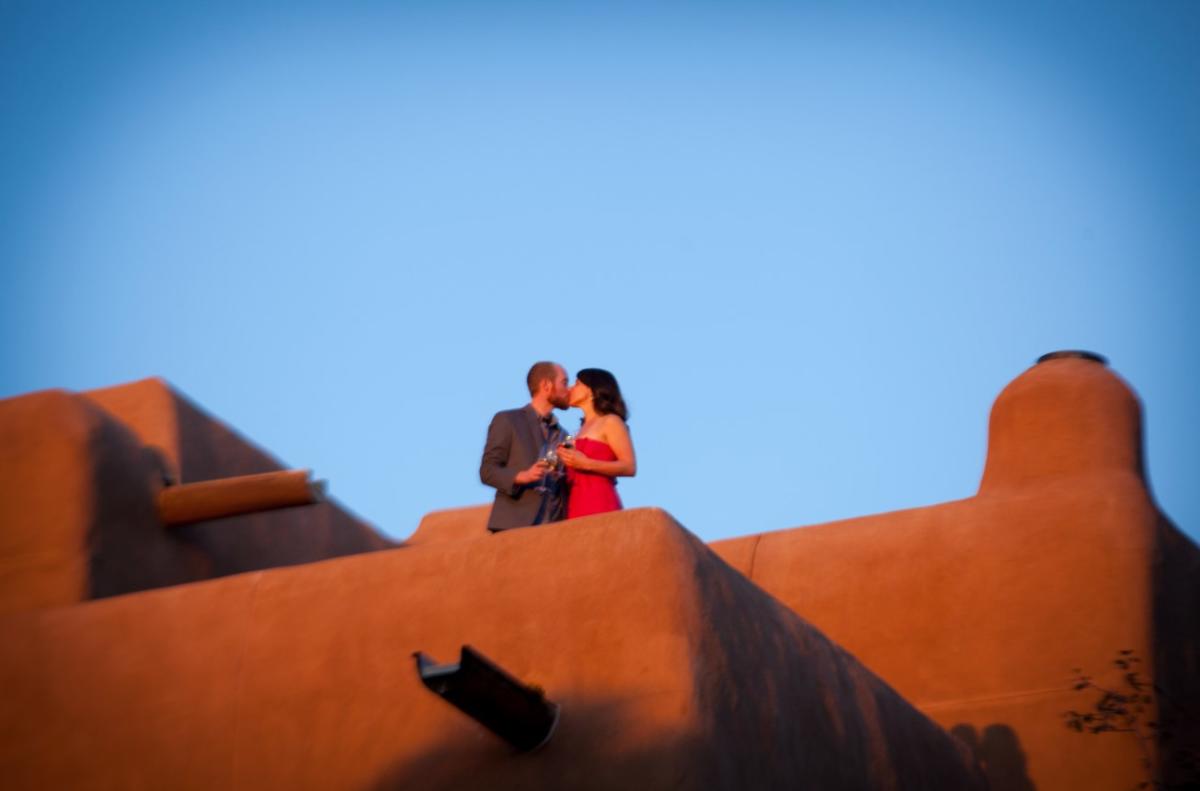Santa Fe nicknamed itself The City Different in the early 1900s, fully aware and proud of its uniqueness, but its story stretches back to the 1600s, giving this Southwestern hub multiple centuries to grow into its imaginative, artistic self.
Today, The City Different continues to be proud—of its numerous historic sites and museums, its hundreds of art galleries, and perhaps the most colorful culinary scene in the country. To celebrate the New Mexican capital, consider some of the most surprising facts about Santa Fe—and how you can best experience them.
1. Santa Fe is the oldest capital city in the US

Established way back in 1607, Santa Fe first became a capital three years later, making it both the oldest capital city in the country and the oldest European settlement west of the Mississippi. It also served as the capital of the Spanish “Kingdom of New Mexico,” the Mexican province of Nuevo Méjico, and as the principal city for the Spanish Empire north of the Rio Grande.
Of course, people had been living on and near the site of the city long before its Western founding—namely, communities of Indians. Records show settlements in the area dating back to as early as 1050.
Experience it: Remarkably, buildings from the start of the Spanish era still stand. The nation's oldest building, the Palace of the Governors, has stood since the early 1600s when it was erected to be the seat of the colonial government. Today, this historic adobe structure serves as New Mexico’s history museum, detailing the intervening 400-some years of life in the state. There’s a wonderful (daily!) Native American artisans market under the portal, where you can buy jewelry and tokens straight from the artists.
The San Miguel Chapel, aka “the Oldest Church,” also dates way back. Yes, it’s still standing—and generally offers services twice a day (once in Latin).
2. …but the city’s Native roots run even deeper.

A significant part of Santa Fe’s culture is connected to New Mexico's 23 Native American Tribes, Nations, and Pueblos. Each tribe comprises its own sovereign nation, so the rules, language, and culture differ. North of Santa Fe, you can visit the Eight Northern Pueblos—Nambé (Nanbé Owingeh), Ohkay Owingeh (formerly San Juan), Picurís, Pojoaque, San Ildefonso, Santa Clara, Taos, and Tesuque—the history of which dates back more than a thousand years.
Experience it: Numerous Indigenous celebrations are held throughout the year on the Pueblos, with three notables in January alone: King’s Day Celebration, St. Ildefonso Feast Day, and St. Paul’s Feast Day. March is the quiet month for most Pueblos — be respectful, and don’t plan a visit then. Public events ramp back up in July and August with the anniversary of the 1680 Pueblo Revolt and Santa Clara Feast Day. Also, since 1922, Santa Fe has hosted Santa Fe Indian Market, the largest and most prestigious intertribal juried art market in the world, and celebrates Indigenous Peoples' Day with a full weekend of cultural events.
3. The landscape is more ski-basin than desert.

Contrary to popular belief, Santa Fe isn’t actually high desert—technically, it’s a semiarid steppe at the crossroads of grass and shrub lands, piñon-juniper woodlands, and 1.6 million acres of high mountain coniferous national forest (with cold winters!). In addition to the 320+ days of sunshine, locals get to experience all four seasons. This means you could easily plan multiple trips here throughout the year, visiting at the perfect time to bike, hike, camp, climb, golf, and ski.
Experience it: Santa Fe and its surroundings are stunning to explore on two wheels or your own two feet. This is especially true in fall, when the aspens go golden and you can walk the many trails through the falling leaves. Try the Aspen Vista Trail off Hyde Park Road to see it for yourself.
In winter, Santa Fe trades hiking and biking gear for skis and boards. Ski Santa Fe—with a base elevation of 10,350 feet—is only 16 miles from the historic Plaza and sees an average annual snowfall of 225 inches. Cross-country skiers and snowshoers can glide through the trees here, too.
4. Santa Fe was the country’s first UNESCO-designated Creative City…

In 2005, Santa Fe made US history by becoming a UNESCO Creative City. One in 10 jobs in Santa Fe are connected to the arts, and the The City Different has a vast creative scene spanning several districts and neighborhoods, beloved by locals and tourists alike. It would take months to explore it all, but that shouldn’t keep you from trying.
Experience it: Meow Wolf has that immersive thing going on. The first permanent installation appeared in 2016, supported by Game of Thrones author George R.R. Martin (who happens to live in Santa Fe). Visitors to Meow Wolf’s House of Eternal Return can explore 70+ connected rooms of surprising portals, secret passageways, and surrealist creations. Another recommended creative experience is SITE Santa Fe, a contemporary art museum with experimental and innovative curatorial approaches to ever-changing exhibits.
5. …and it’s one of the largest art markets in the US.

Santa Fe didn’t become an art powerhouse overnight—like most facts about the city, this one has a long backstory. Artists first began to migrate to Santa Fe in the late 1800s, mesmerized by the landscape, the culture, and the adobe architecture. This trend never really stopped, and the city embraced it with the establishment of the New Mexico Museum of Art in 1917.
Today, The City Different is home to an extensive array of museums and immersive art experiences and a whopping 250+ galleries, 100 of which are located on the winding half mile of Canyon Road. Though it's been true forever, Santa Fe was named the world's best city for galleries and museums by an independent study in 2021. During the summer, Santa Fe also presents a number of art festivals and markets you do not want to miss.
Experience it: If you’d like to meet local artists, visit Santa Fe on a Friday night, when many galleries—especially in the summer—host public openings. Since the Canyon Road galleries are right next door to each other, this is the ideal place to begin exploring the city’s art scene. Meanwhile, if you’re looking for more contemporary art, head to the Railyard Arts District.
6. In Santa Fe, food is an art form all its own…

Whether you’re hitting up a local-favorite diner for traditional New Mexican cuisine or looking for one of the city’s many imaginative twists on the original, New Mexican food is hard to beat. The key ingredient is chile—either red or green—and the heat varies a lot from restaurant to restaurant. If you’re not sure which one to order, you can always say “Christmas!” and try both. (Tip: Try both.)
Experience it: Eat everything you can in Santa Fe. Try a breakfast burrito smothered with green chile at Tia Sophia’s, which claims it's the birthplace of the ubiquitous repast. For lunch, try Tortilla Flats—near Meow Wolf—and their red chile pork ribs. If you aren’t busting at the seams with New Mexican food by this point, go for the stuffed sopaipilla with your choice of meat at La Choza.
If you hit your chile quota (apparently some people have one), try Jambo for some great jerk chicken or Cowgirl BBQ for their ribs sans chile (they also have live music, a kids' play area, a pool hall, and a daily happy hour!).
With 250 restaurants in The City Different, you can't go wrong. One way to try many of them all at once is to plan your visit around the Santa Fe Wine & Chile Fiesta (50 local restaurants paired with 90 wineries from around the world), held the last weekend in September each year.
7. …while the Santa Fe Opera is nothing short of world famous.

Beyond the five performances each summer, the opera house itself is impressive, an architectural wonder of an open-air adobe structure framing views of the mountains to the east and those intensely colorful New Mexico sunsets to the west. Since it first opened in 1957, the Santa Fe Opera has presented more than 170 different productions (totaling more than 2,000 performances), and has become ever more woven into the community of The City Different each year, offering opportunities for all to experience the majesty of the opera!
Experience it: The opera generally announces its upcoming season a year in advance, so you have ample time to plan. Classics such as The Barber of Seville and The Magic Flute, as well as the world premiere of M. Butterfly have graced the stage. Don’t miss the tradition of tailgating in the parking lot beforehand and bear in mind that this is not a regular tailgating event—it can be a very elegant affair! So arrive early, park, and lay out your feast on a white tablecloth (no kidding—it's a thing!). You can also order a tailgate box in advance—how nice is that?!
8. Summer in Santa Fe = art market season.

If the 250+ galleries are not enough to captivate you, consider that Santa Fe also hosts various art markets. They’re mostly held in the summer and feature a blend of Anglo, Native American, Spanish, and international art.
Experience it: Start with the International Folk Art Market, which takes place in July and showcases folk art from more than 50 different countries. And then the annual Santa Fe Art Week, where 100+ events are planned across the city’s museums, attractions, and galleries. During the last weekend in July, you’ll have the chance to experience the Contemporary Hispanic Market, where New Mexico-hailing Hispanic artists show their paintings, printmaking, sculpture, photography, furniture, jewelry, ceramics, weaving, and more, as well as the Traditional Spanish Market, where juried artists from New Mexico and Colorado show their work in 19 traditional categories. Held on the Plaza, the celebrations of Hispanic culture include dance, music, and food.
If you can, definitely stick around for the Santa Fe Indian Market, held the third weekend in August—it’s the largest art market dedicated to Native American art in the world.
9. So many famous writers and artists have lived here (and still do).
 George R.R. Martin (Photo by Kate Russell)
George R.R. Martin (Photo by Kate Russell)Considering just how many people work in the creative sector in Santa Fe, it’s no surprise that some of them are well-known faces. Perhaps the most famous of the local artist contingent was Georgia O’Keeffe, a 20th-century painter known for her vibrant depictions of flowers. As mentioned above, Game of Thrones writer George R.R. Martin currently resides in Santa Fe, and other notable past residents have included D.H. Lawrence and Willa Cather.
Experience it: It would only be fitting to see O’Keeffe’s work in the place that inspired it. The Georgia O’Keeffe Museum, located downtown, features not only her paintings but exhibits on her creative process as well. If you have a car and some extra time, you can also venture north to Ghost Ranch, one of O’Keeffe’s first homes.
Those interested in Santa Fe’s writers and the literati in general should add the Santa Fe Literary Festival to their bucket list!
10. This is one of the most romantic cities in the country.
 Photo: Tourism Santa Fe
Photo: Tourism Santa FeSanta Fe regularly rakes in the accolades, and romance is always one of its medals. Artists’ cities tend to have an emotional ambiance to them, and there’s something magical about the meeting of ancient cultures with chile-infused cuisine, hills rolling into mountains, and the golds and tans of adobe-style architecture melting into the warm hues of a Santa Fe sunset.
If you’re here to feel the love, take in a sunset accompanied by a cocktail from the vantage point of The Bell Tower Bar, dine at Geronimo, named on Open Table's list of 100 Most Romantic Restaurants in America, try an herbal aphrodisiac elixir at Kakawa Chocolate House, wander the charming, tree-canopied half mile of Canyon Road, poking into one of 100+ art galleries as it suits you, and luxuriate with a couple’s massage at the Japanese-style bathhouse Ten Thousand Waves, a world-class spa with private outdoor baths, set in a forest of juniper and pine.
11. The best trail in town might just be the Margarita Trail.

The Santa Fe Margarita Trail celebrates more than 40 signature margaritas, each of which has been crafted specifically for the trail by a local establishment. Some particularly special concoctions to look out for include the Amaya Jalapeño Margarita (Amaya at Hotel Santa Fe), the MadChile Margarita (Mine Shaft Tavern), and the Juliarita Margarita (named after Julia Staab, the resident ghost at La Posada de Santa Fe).
Experience it: Venture out on the trail! Before you start, pick up a paper Passport at any Visitors Center or download the Margarita Trail app for a map of where to find all 40+ margaritas. Conquer the trail and you’ll earn some very real rewards—in addition to the reward of experiencing The City Different.
Note: This blog was written by author Sarah Osman for Matador Network in paid partnership with TOURISM Santa Fe.
Get a taste of The City Different! Order your Official Santa Fe Visitors Guide now or browse our deals and specials to help you plan your next trip to Santa Fe.









